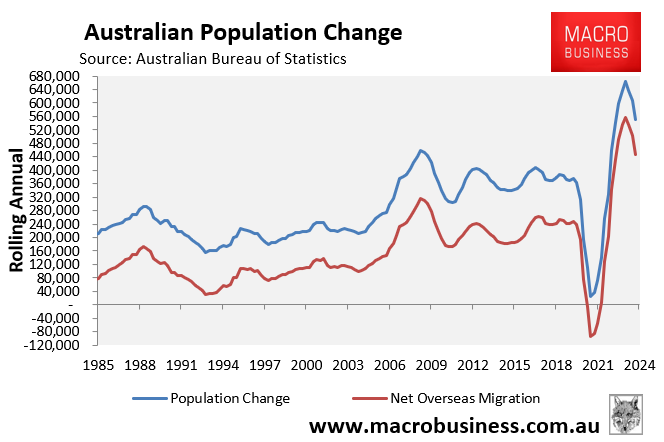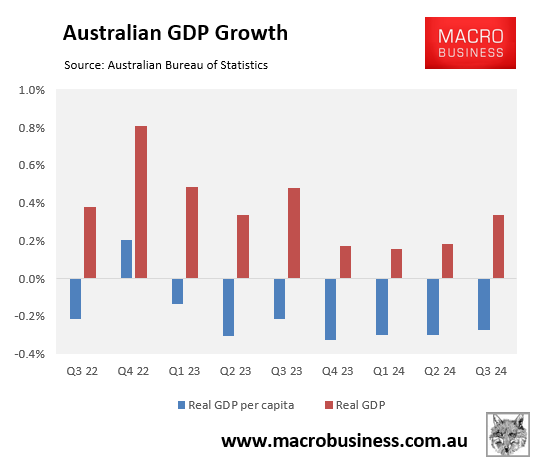Last week, I questioned why the population estimates in the Q3 National Accounts were substantially different from the official Q2 population figures released by the Australian Bureau of Statistics (ABS) only eight days later.
The Q3 national accounts implied that Australia’s population grew by nearly 640,000 people over the year, barely retracing from the peak.

However, the official Q2 population statistics from the ABS revealed that Australia’s population had grown by 552,000 over the year to Q2 2024.

The difference between the two series is illustrated below.

The Q3 national accounts implied 656,000 population growth for 2023–24, versus 552,000 growth in the Q2 official data. That is a 104,000 difference in data released by the ABS only eight days apart.

The ABS issued a media release on Thursday clarifying the issue:
The ABS used incorrect population estimates and projections in the Australian National Accounts released on 4 December 2024.
The population estimates and projections were overstated from the June quarter 2023 onwards. The overstatement peaked in the September quarter 2024 at around 80,000 persons (0.3 per cent of total population) seasonally adjusted.
In the National Accounts, population estimates and projections are primarily used for calculating per capita measures. The impact on GDP per capita is provided in Table 1…

The ABS will not reissue the September quarter 2024 National Accounts given the small impact of the error. The figures will be revised in the next release on 5 March 2025…
We will use the lessons learned from this error to continue strengthening our quality assurance systems.
It appears that the national accounts team of the ABS had not bothered to communicate with the population team.
The upshot is that Australia’s per capita recession is slightly shallower than initially reported in the Q3 national accounts.

Nevertheless, at seven consecutive quarters, it remains the longest per capita recession on record.

